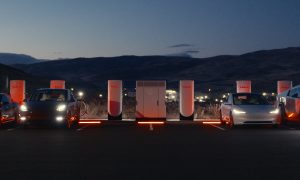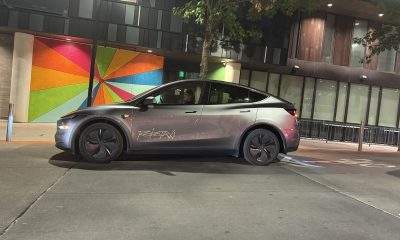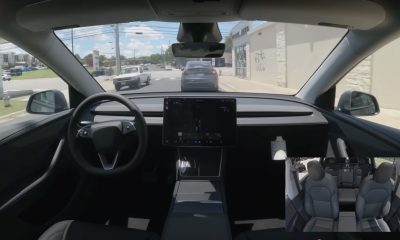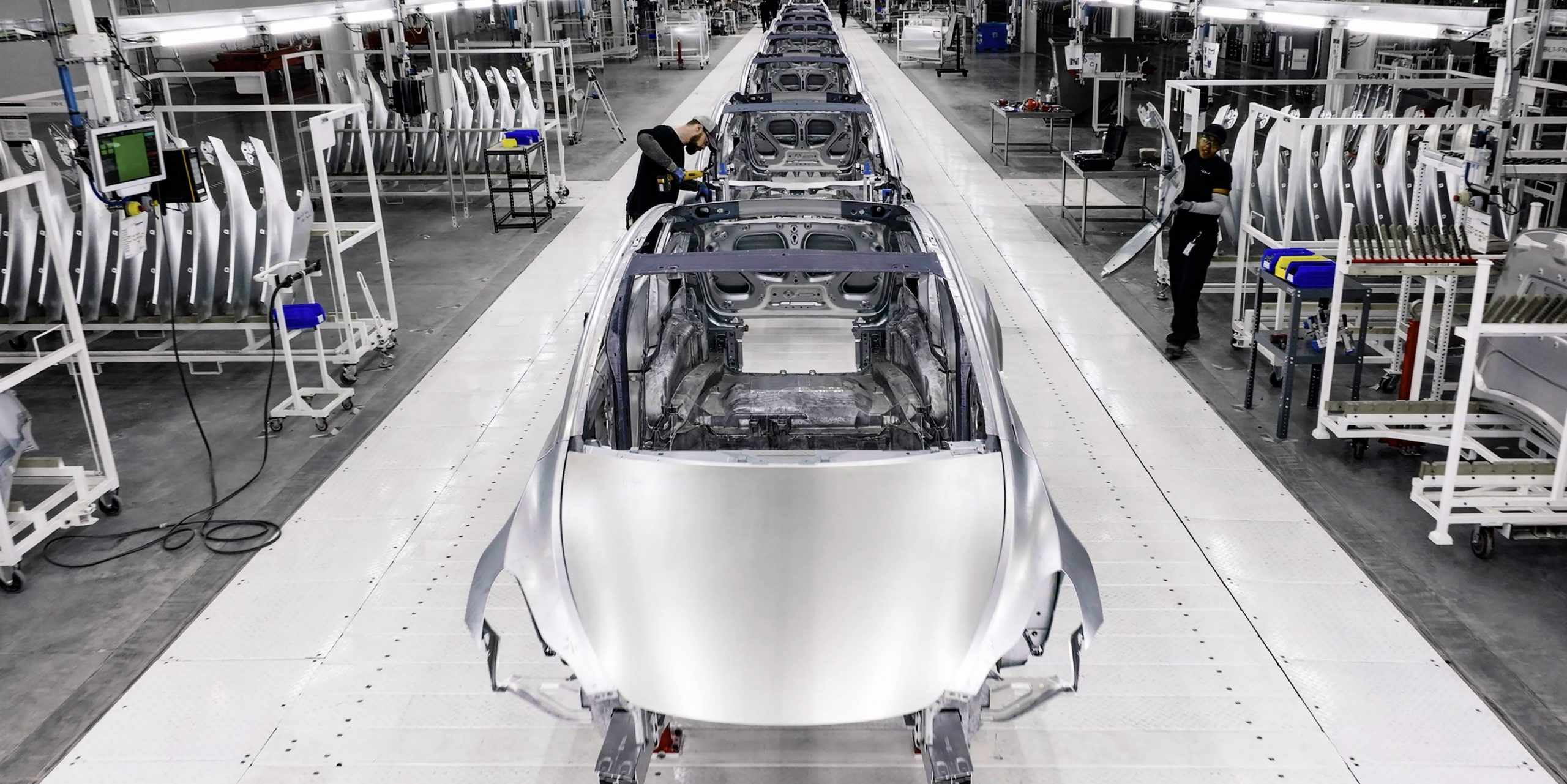

Investor's Corner
Top 10 questions Tesla (TSLA) investors want to know from the Q2 2022 earnings call
Tesla (NASDAQ:TSLA) is holding its second-quarter earnings call after markets close today, July 20, 2022. As in previous quarters, Tesla investors have voted for the top questions that they want the company’s executives to answer at the upcoming Q2 2022 earnings call.
As noted by Say, the questions that Tesla investors have submitted for the second quarter earnings call represent inquiries from both retail and institutional investors.
Following are the Top 10 Questions from Retail Tesla investors:
- How do you feel the progress of FSD is going, and does Andrej Karpathy leaving have any significant impact on any timelines/potential progress?
- How is the 4680 ramp going, and is Giga Texas producing cells yet?
- Can you speak w/some level of precision on the 4680 ramp, expected vs. actual yield at this point in time? Same for expected daily output vs. actual, and when does output start meeting plan?
- Will there be early access for Tesla long-term investors to have early access to SpaceX as an investment opportunity?
- How does $TSLA plan to handle all the misinformation, attacks, and fake news against Tesla and Elon Musk? We have been dealing with this and it affects the stock.
- How do you plan on executing your strategies to create massive scale? Any ETA on Master Plan Part 3?
- Would you consider buying back shares if we can maintain profitability?
- What are the biggest 4680 headwinds? And what do you think 4680 production output will be by the end of 2022?
- Any update with Tesla HVAC that can be shared?
- Is Tesla still planning a software development kit and app store for third-party developers to make and sell Tesla apps?
And the following are the questions from Tesla institutional investors.
- Chinese EV manufacturers seem to be doing a better job than their western competitors (excluding Tesla) at innovating in software and design. How can Tesla make sure the company is staying ahead of those manufacturers, both within and without China?
- When will Tesla have a unified vector space for both the static and moving object network? Will this be v11 or a later version? If the latter, can you explain what makes it a difficult problem in layman’s terms?
- Elon recently tweeted about lowering prices “once inflation cools down.” Can you elaborate on what you mean by cooling down and how aggressively the company will lower prices? More broadly, how do you think about auto pricing longer-term?
- You made the right economic call before most on inflation when you diversified into bitcoin. It has since shown it’s not much of a hedge in the real-world test the last few months. How do you think about it as an asset over the LT, and what do you need to see to change your view?
- With regards to the tamp of production in Austin and Berlin, how is the situation with regards to the supply of semiconductors, battery cells, and other components? How about cost inflation impacting profitability of these and other plants?
- What’s the source of Energy for Tesla Berlin? Would the plant would be considered a priority for the German government in case of Gas / Energy rationing?
- Assuming technical hurdles are achieved, what is Tesla’s plan for autonomy/robotaxi? Do you expect to first deploy into repetitive routes like Vegas Loop/airport shuttles? or launch fleets in urban areas? What is assessment of political willpower for each?
- What sort of demand has tesla seen for Optimus? How would you characterize this demand in terms of units? Re: economics, a hardware fee with SaaS element seems to make sense but can you guide on dollar amounts the market may be willing to pay per unit + exp. margins (at scale)?
- At what revenue level will Tesla have to grow its Energy Generation and Storage business to reach profitability, and when might that be achieved? Will you need new battery or solar technology advancements?
- How would you rate the EV industry’s progress in achieving sustainable transport, and what are the 3 most likely countries Tesla will need new Gigafactories to achieve sustainable transport?
Disclaimer: I am long TSLA.
Elon Musk
Tesla investors will be shocked by Jim Cramer’s latest assessment
Jim Cramer is now speaking positively about Tesla, especially in terms of its Robotaxi performance and its perception as a company.

Tesla investors will be shocked by analyst Jim Cramer’s latest assessment of the company.
When it comes to Tesla analysts, many of them are consistent. The bulls usually stay the bulls, and the bears usually stay the bears. The notable analysts on each side are Dan Ives and Adam Jonas for the bulls, and Gordon Johnson for the bears.
Jim Cramer is one analyst who does not necessarily fit this mold. Cramer, who hosts CNBC’s Mad Money, has switched his opinion on Tesla stock (NASDAQ: TSLA) many times.
He has been bullish, like he was when he said the stock was a “sleeping giant” two years ago, and he has been bearish, like he was when he said there was “nothing magnificent” about the company just a few months ago.
Now, he is back to being a bull.
Cramer’s comments were related to two key points: how NVIDIA CEO Jensen Huang describes Tesla after working closely with the Company through their transactions, and how it is not a car company, as well as the recent launch of the Robotaxi fleet.
Jensen Huang’s Tesla Narrative
Cramer says that the narrative on quarterly and annual deliveries is overblown, and those who continue to worry about Tesla’s performance on that metric are misled.
“It’s not a car company,” he said.
He went on to say that people like Huang speak highly of Tesla, and that should be enough to deter any true skepticism:
“I believe what Musk says cause Musk is working with Jensen and Jensen’s telling me what’s happening on the other side is pretty amazing.”
Tesla self-driving development gets huge compliment from NVIDIA CEO
Robotaxi Launch
Many media outlets are being extremely negative regarding the early rollout of Tesla’s Robotaxi platform in Austin, Texas.
There have been a handful of small issues, but nothing significant. Cramer says that humans make mistakes in vehicles too, yet, when Tesla’s test phase of the Robotaxi does it, it’s front page news and needs to be magnified.
He said:
“Look, I mean, drivers make mistakes all the time. Why should we hold Tesla to a standard where there can be no mistakes?”
It’s refreshing to hear Cramer speak logically about the Robotaxi fleet, as Tesla has taken every measure to ensure there are no mishaps. There are safety monitors in the passenger seat, and the area of travel is limited, confined to a small number of people.
Tesla is still improving and hopes to remove teleoperators and safety monitors slowly, as CEO Elon Musk said more freedom could be granted within one or two months.
Investor's Corner
Tesla gets $475 price target from Benchmark amid initial Robotaxi rollout
Tesla’s limited rollout of its Robotaxi service in Austin is already catching the eye of Wall Street.

Venture capital firm Benchmark recently reiterated its “Buy” rating and raised its price target on Tesla stock (NASDAQ: TSLA) from $350 to $475 per share, citing the company’s initial Robotaxi service deployment as a sign of future growth potential.
Benchmark analyst Mickey Legg praised the Robotaxi service pilot’s “controlled and safety-first approach,” adding that it could help Tesla earn the trust of regulators and the general public.
Confidence in camera-based autonomy
Legg reiterated Benchmark’s belief in Tesla’s vision-only approach to autonomous driving. “We are a believer in Tesla’s camera-focused approach that is not only cost effective but also scalable,” he noted.
The analyst contrasted Tesla’s simple setup with the more expensive hardware stacks used by competitors like Waymo, which use various sophisticated sensors that hike up costs, as noted in an Investing.com report. Compared to Tesla’s Model Y Robotaxis, Waymo’s self-driving cars are significantly more expensive.
He also pointed to upcoming Texas regulations set to take effect in September, suggesting they could help create a regulatory framework favorable to autonomous services in other cities.
“New regulations for autonomous vehicles are set to go into place on Sept. 1 in TX that we believe will further help win trust and pave the way for expansion to additional cities,” the analyst wrote.
Tesla as a robotics powerhouse
Beyond robotaxis, Legg sees Tesla evolving beyond its roots as an electric vehicle maker. He noted that Tesla’s humanoid robot, Optimus, could be a long-term growth driver alongside new vehicle programs and other future initiatives.
“In our view, the company is undergoing an evolution from a trailblazing vehicle OEM to a high-tech automation and robotics company with unmatched domestic manufacturing scale,” he wrote.
Benchmark noted that Tesla stock had rebounded over 50% from its April lows, driven in part by easing tariff concerns and growing momentum around autonomy. With its initial Robotaxi rollout now underway, the firm has returned to its previous $475 per share target and reaffirmed TSLA as a Benchmark Top Pick for 2025.
Elon Musk
Tesla blacklisted by Swedish pension fund AP7 as it sells entire stake
A Swedish pension fund is offloading its Tesla holdings for good.
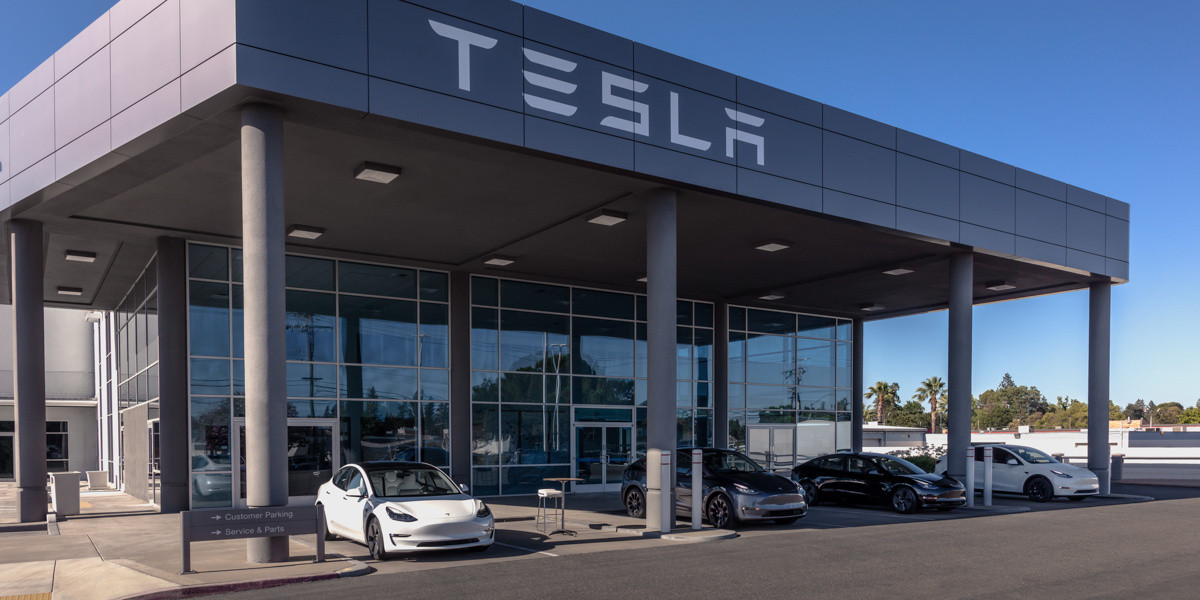
Tesla shares have been blacklisted by the Swedish pension fund AP7, who said earlier today that it has “verified violations of labor rights in the United States” by the automaker.
The fund ended up selling its entire stake, which was worth around $1.36 billion when it liquidated its holdings in late May. Reuters first reported on AP7’s move.
Other pension and retirement funds have relinquished some of their Tesla holdings due to CEO Elon Musk’s involvement in politics, among other reasons, and although the company’s stock has been a great contributor to growth for many funds over the past decade, these managers are not willing to see past the CEO’s right to free speech.
However, AP7 says the move is related not to Musk’s involvement in government nor his political stances. Instead, the fund said it verified several labor rights violations in the U.S.:
“AP7 has decided to blacklist Tesla due to verified violations of labor rights in the United States. Despite several years of dialogue with Tesla, including shareholder proposals in collaboration with other investors, the company has not taken sufficient measures to address the issues.”
Tesla made up about 1 percent of the AP7 Equity Fund, according to a spokesperson. This equated to roughly 13 billion crowns, but the fund’s total assets were about 1,181 billion crowns at the end of May when the Tesla stake was sold off.
Tesla has had its share of labor lawsuits over the past few years, just as any large company deals with at some point or another. There have been claims of restrictions against labor union supporters, including one that Tesla was favored by judges, as they did not want pro-union clothing in the factory. Tesla argued that loose-fitting clothing presented a safety hazard, and the courts agreed.
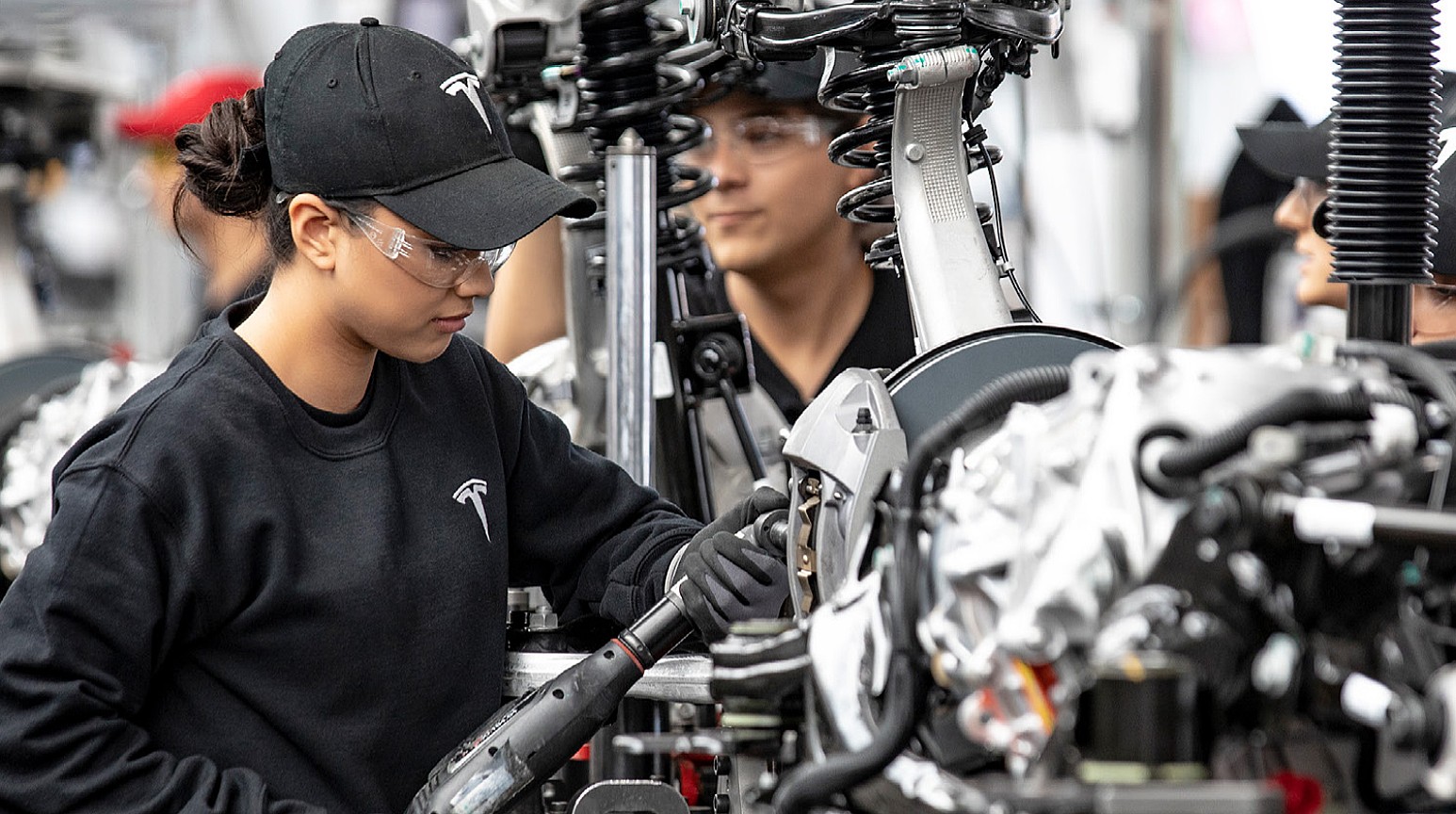
(Photo: Tesla)
There have also been claims of racism at the Fremont Factory by a former elevator contractor named Owen Diaz. He was awarded a substantial sum of $137m. However, U.S. District Judge William Orrick ruled the $137 million award was excessive, reducing it to $15 million. Diaz rejected this sum.
Another jury awarded Diaz $3.2 million. Diaz’s legal team said this payout was inadequate. He and Tesla ultimately settled for an undisclosed amount.
AP7 did not list any of the current labor violations that it cited as its reason for
-

 News5 days ago
News5 days agoTesla Robotaxi’s biggest challenge seems to be this one thing
-

 News2 weeks ago
News2 weeks agoTesla confirms massive hardware change for autonomy improvement
-

 Elon Musk2 weeks ago
Elon Musk2 weeks agoElon Musk slams Bloomberg’s shocking xAI cash burn claims
-

 News2 weeks ago
News2 weeks agoTesla features used to flunk 16-year-old’s driver license test
-

 News2 weeks ago
News2 weeks agoTesla China roars back with highest vehicle registrations this Q2 so far
-

 News2 weeks ago
News2 weeks agoTexas lawmakers urge Tesla to delay Austin robotaxi launch to September
-

 News2 weeks ago
News2 weeks agoTesla dominates Cars.com’s Made in America Index with clean sweep
-

 News2 weeks ago
News2 weeks agoTesla’s Grok integration will be more realistic with this cool feature




